 |
| Search this site: |
Hibiscus Section Furcaria: Crosses, To Be or Not To Be Continued
RECORDS OF HIBISCUS CROSSESPrior to our accidental experience of hibiscus crosses, Lyn Craven had recorded information on Hibiscus ‘Wirruna’ in Australian Plants, June 1971. By crossing a pink Hibiscus splendens and a yellow-flowering form of Hibiscus heterophyllus, Lyn obtained an apricot-flowering plant.

Another cross has been recorded by Jan Sked in ‘Planting a Native Garden’ (P1). Hibiscus ‘Pink Ice’, is a hybrid between H. splendens and white H. heterophyllus. This plant, with large pink blooms in spring and summer, is one I would always include in any collection of native hibiscus.
Both Hibiscus ‘Wirruna’ and Hibiscus ‘Pink Ice’ demonstrate one possible feature of crosses, namely seedlings can flower longer than the parents. I have found that this flowering period can be extended with cutting-grown plants.
DEVELOPMENT OF HIBISCUS CROSSESEfforts at hybridisation have now become intentional. Our areas of focus have included:
| Small growing plants | |
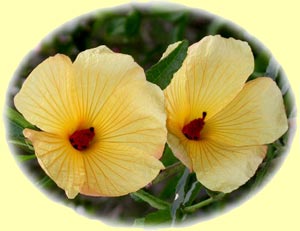 |
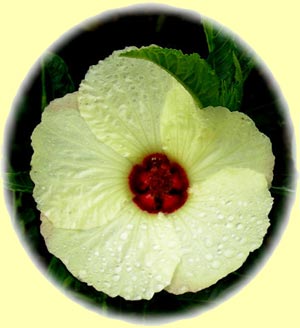 |
| Hibiscus ‘Apricot Mist’ | Hibiscus ‘Citrus Mist’ |
| Different colours or forms of blooms | |
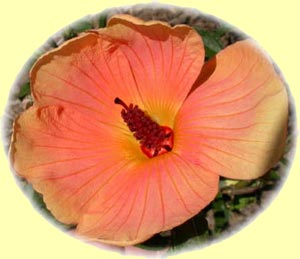 |
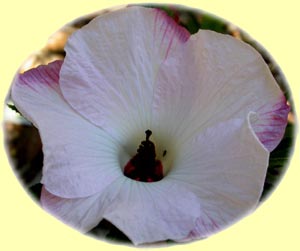 |
| Hibiscus ‘Desert Haze’ | Hibiscus ‘Pete's Blush’ |
| Culinary plants with long-flowering period for ongoing cordial, syrup, jam (See W4) | |
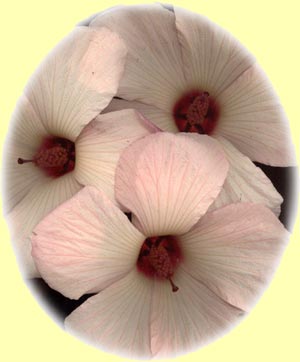 |
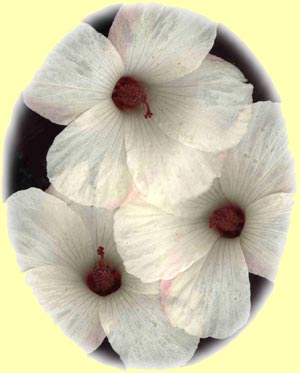 |
| Hibiscus ‘Montburg Pink’ | Hibiscus ‘Ian’s Cream’ |
| Plants with desirable features of species where species do not tolerate our conditions: | |
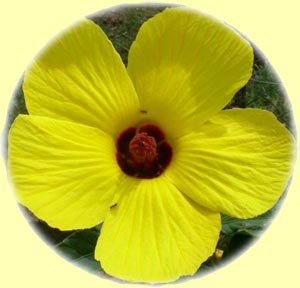 |
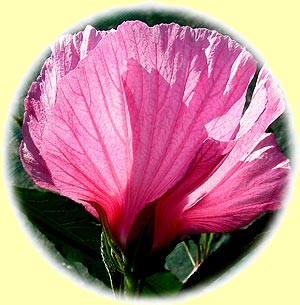 |
| Hibiscus ‘Gold Mist’ gold of H. heterophyllus collected by David Hockings | Hibiscus ‘Cha’s Mist’ pink of ‘Glen Geddes’ |
| Cold tolerant plants | |
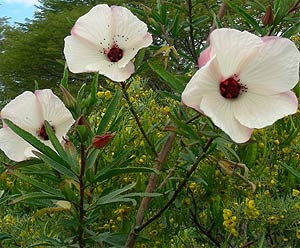 |
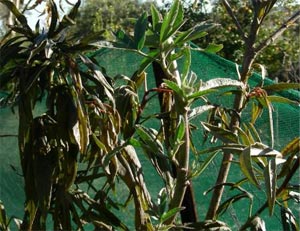 |
| Bloom of 'Ice Mist" and cold tolerant plant (centre) after -5C damaged other seedlings | |
CONCLUSION
Within Hibiscus Section Furcaria, I have found great variation in plants, e.g. variation in flower size, variation in flower shape and variation in the amount of colour on the margins of the flower and in the colour of the stems and branches, as well as variation in flowering times, resistance to predators, hardiness of foliage. I believe that we should be choosing from superior forms and propagating or hybridising from these. Not only will an unattractive plant occupy the same amount of space as one selected for superior characteristics, but poor specimens will hinder acceptance of the wonderful Australian species of plants within this section of Hibiscus. It is important to note that a seedling cannot be judged accurately until the plant has been grown from a cutting and trialled as a cutting-grown plant.
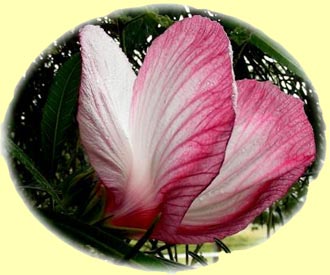
Hibiscus heterophyllus form flowering in March;
other local forms do not bloom after January
Hibiscus from Section Furcaria are so noticeable that both Hibiscus heterophyllus and Hibiscus splendens were featured in early written records. Selected forms or crosses can provide a food source for both people and fauna and these plants have the ability to survive in the toughest of conditions. It is hoped that increasing interest will not only make these beautiful, useful and tough plants more readily available but that the landscaping potential of this long ignored family of plants will gain greater recognition in Australian horticulture.

Top left: pod parent; Top right: pollen parent; below: seedling
W1 Hibiscus heterophyllus http://www.hibiscus.org/species/hheterophyllus.php
W2 Hibiscus divaricatus http://www.hibiscus.org/species/hheterophyllus-hdivaricatus.php
W3 Hibiscus splendens http://www.hibiscus.org/species/hsplendens.php
W4 Culinary http://www.hibiscus.org/culinary.php
P1 J. M. Sked, L. S. Smith, E. Prescott. Planting a Native Garden in the Subtropics. Pine Rivers Branch, Society for Growing Australian Plants, Queensland Region Inc., 6th Edition, 1998. 1st edition 1976.
FAQs | Links | Contact Us | Privacy Policy
Copyright © 2000-2011 hibiscus.org All rights reserved.
Featuring a selection of classic hymns performed on piano and organ, with lyrics, free for reuse